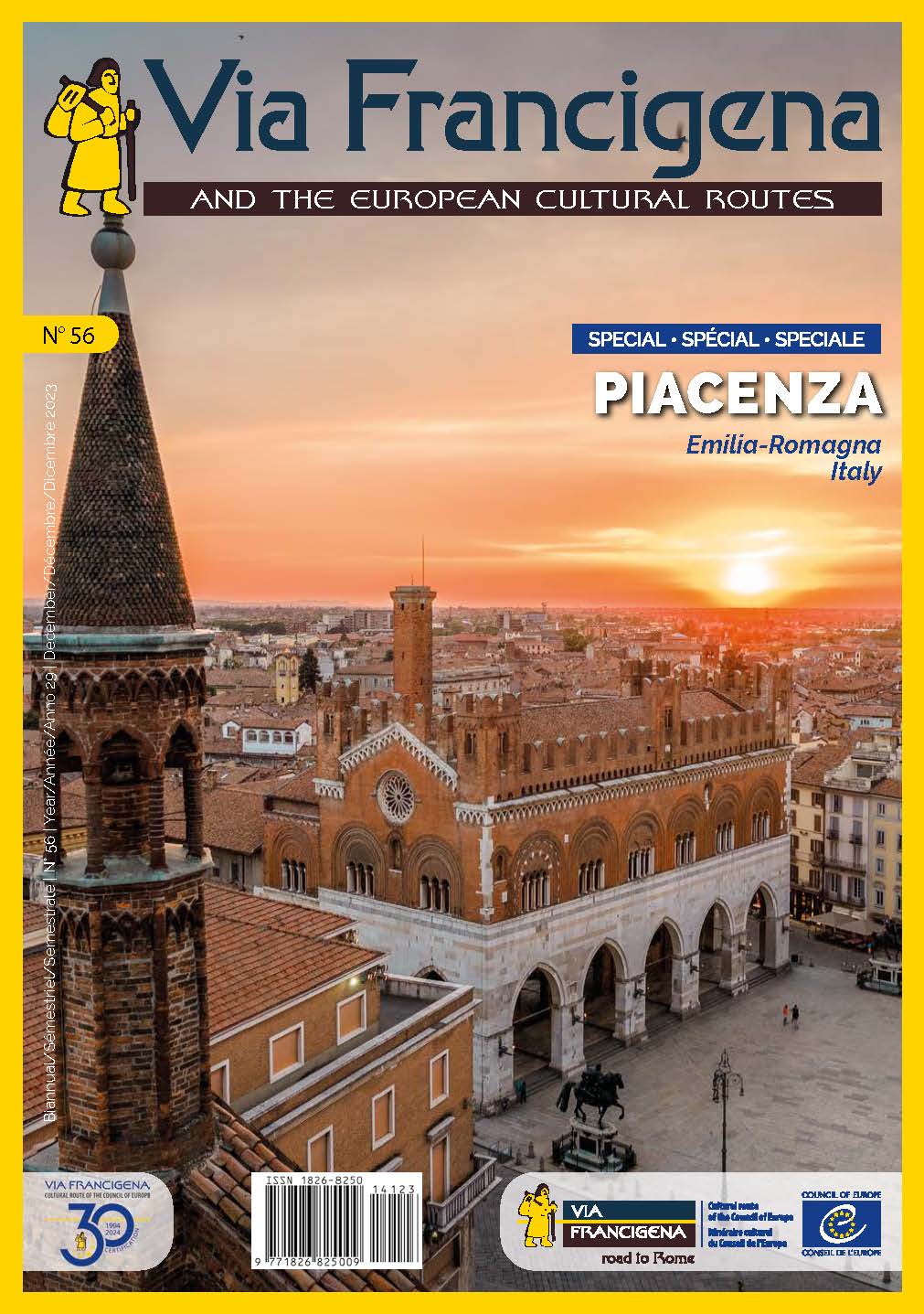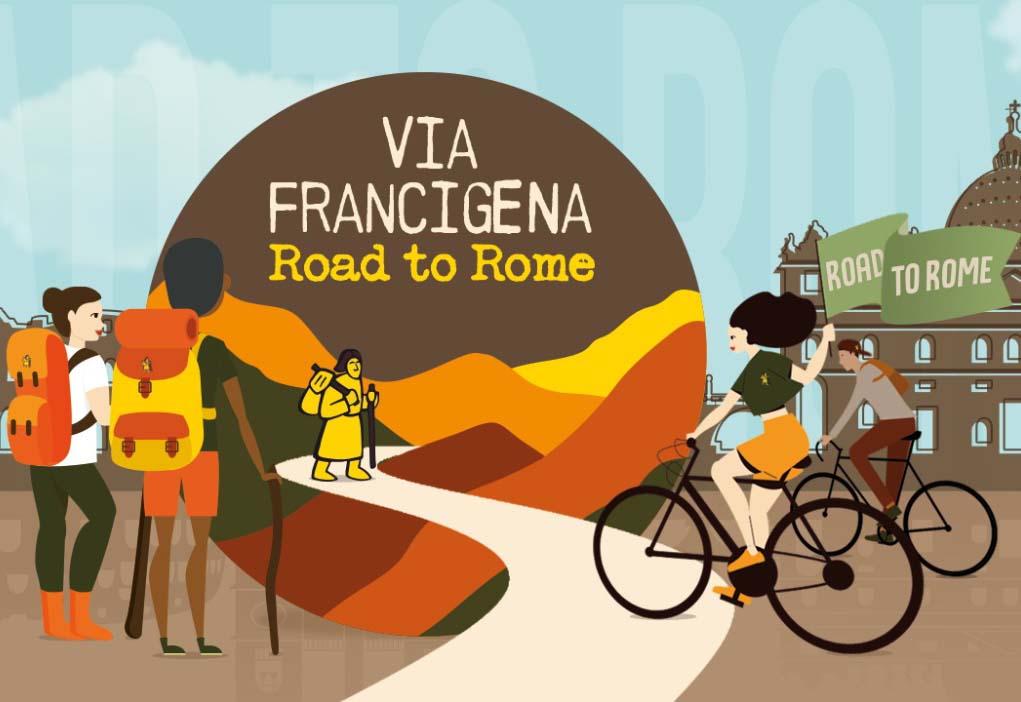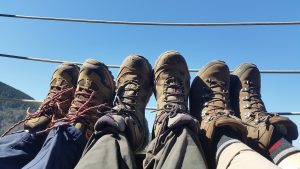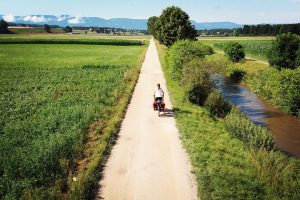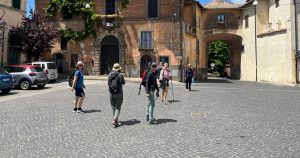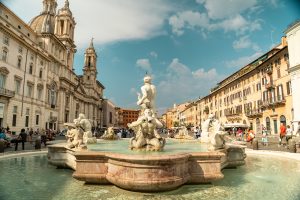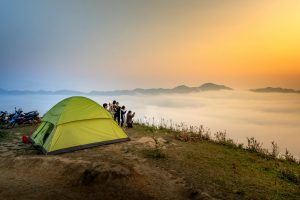During a long walk, the feet are abnormally stressed. It is therefore important to choose the most suitable shoe correctly, but how do you find the most appropriate footwear for walking?
Considering the route of the Via Francigena, the choice depends on the season and the route you decide to take: if you have to walk the entire itinerary and then cross the Alps at the Great St Bernard Pass, a waterproof high boot is an almost obligatory choice. To study the progress of the walk and thus think about the appropriate footwear, we recommend downloading the AllTrails app, which offers a special discount for the paid version.

Trekking boots, for example, are very light and comfortable, and, compared to flat shoes, have the advantage of supporting the ankle, which is highly stressed by the weight of the rucksack, with the benefit of preventing sprains and joint and tendon problems, especially on rough stretches. In addition, waterproof boots allow you to tackle the (rare) fords and protect your feet from rain and mud. Having a good quality boot is useful on light dirt and asphalt roads.
On the other hand, the low trekking shoe, especially if very breathable (and therefore not waterproof), is a better solution for warmer periods, avoiding excessive sweating that facilitates the formation of blisters. With this shoe, one loses ankle support and is therefore less suitable for the more demanding sections of the trail, as well as when crossing fords and in the rain.
Carrying trekking sandals, along with walking shoes, is very useful for releasing and allowing the feet to breathe in moments of relaxation, but also for showering, or crossing fords. Although some pilgrims use sandals for walking during the day, even if they are well made, it is advisable to avoid using them for long stretches to avoid blisters. On the other hand, sandals do not protect the foot from accidental impacts against stones and obstacles, and are therefore not suitable for stretches where the path becomes uneven.
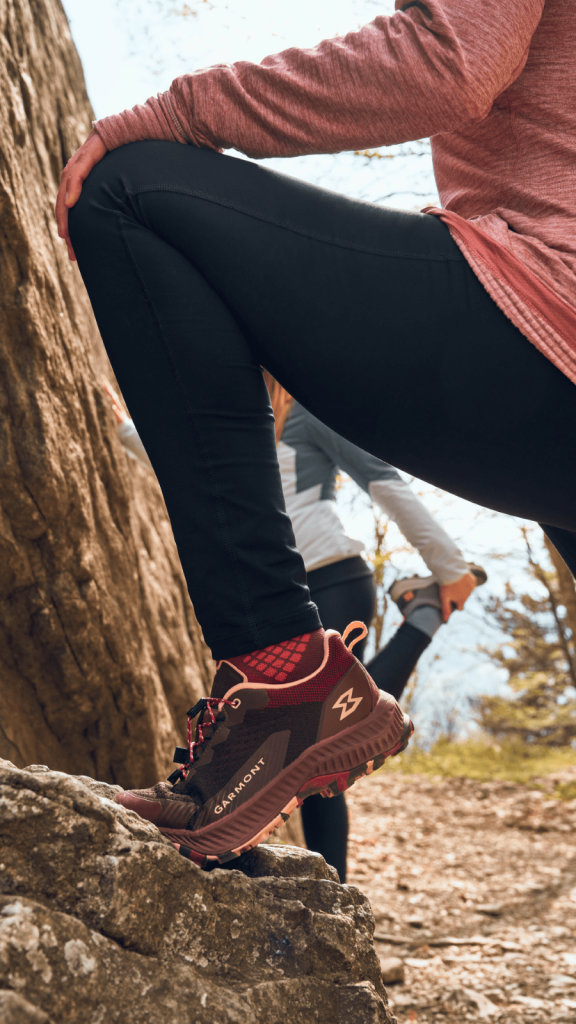
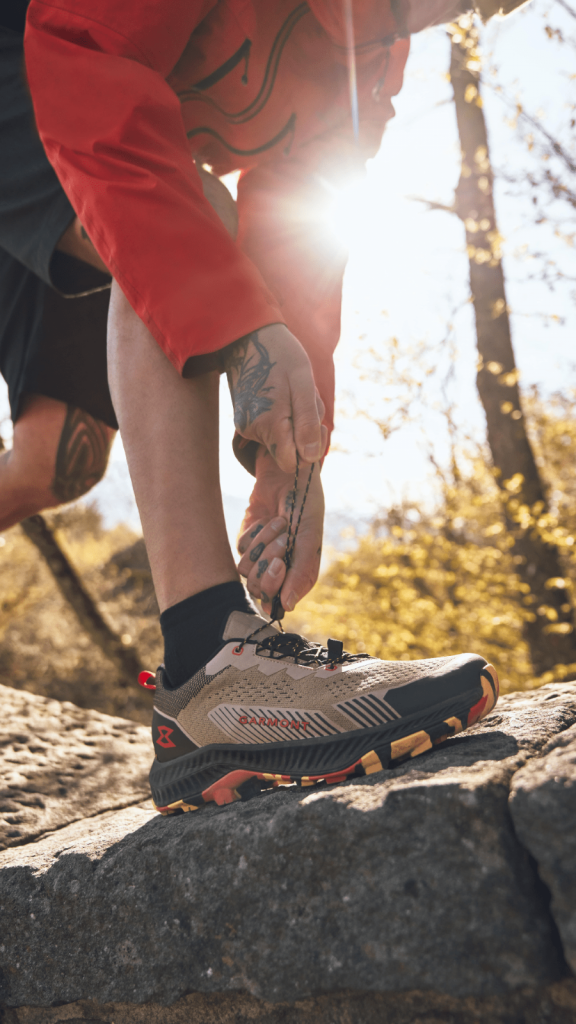
Widely discouraged, on the other hand, are so-called ‘trainers’, i.e. shoes designed for other sports and not specifically for long-distance walking: this is because they may have soles that are too thin, or too soft, that do not adequately support the ankle. The fact that they are comfortable in everyday use does not mean that they are suitable for walking. Using a shoe for a walk involves very little strain compared to walking 25 km a day for several days.
Where to buy your hiking shoes
For the purchase, it is best to choose a specialised shop, where the shop assistants have the appropriate technical expertise to give advice. One should not be in a hurry to find the right one. One should take time trying on and comparing various models, wearing them for a long time, walking, and matching the right trekking socks. Some shops are equipped with a platform that simulates a descent, where you can check whether the fit is correct or ‘if you touch the toe’. It is important to remember that the foot generally swells, especially if it is very hot, and that hiking socks are padded. It would therefore be a good idea to choose an abundant shoe, at least one size larger than you usually wear.

Boots that are too stiff and suitable for high mountain use should also be avoided. However, a well-structured, freshly tried-on shoe may feel rather stiff, but this feeling is only initial, since after prolonged use, it will tend to disappear.
Although discounts are tempting, betting on savings when choosing footwear does not pay off. Buying cheap shoes could turn the walking experience into an ordeal. It is better to invest a reasonable amount of money in a quality pair of shoes to make sure you have the right equipment and get off on the right foot.
After purchase, it is necessary to ‘test’ the shoes for a few days before departure. First at home, then for a few short walks, and then for longer and longer distances. Using new shoes directly carries a big risk, even if they are apparently comfortable. Before use, they should be properly broken in.


Our partner Garmont offers a wide selection of footwear, on which you can also get a price reduction if you intend to walk the Via Francigena: Discover here the discount reserved for Via Francigena pilgrims for the purchase of a pair of Garmont shoes.
Among the new models is also the 9.81 HI-RIDE hybrid shoe, which we talked about when discussing the Via Francigena by bike. Another important consideration to make is the choice of shoe in the event that you wish to walk the route, in whole or in part, on a bicycle, since in this case, in addition to models that allow you to stay attached to the pedals, it is a good idea to take those that also have a sole suitable for walking.

Socks
The choice of socks is almost as important as the choice of shoes.
The right ones are the special anti-bladder socks, with reinforced toe and heel. They generally cost a little more than normal socks, but the comfort they provide justifies the expense.
Merino wool socks in particular are recommended, of which there is a lightweight version for summer.
Remember to bring at least three pairs of socks, so that a dry pair is always available.
Foot care
The main problem created by the wrong shoes and socks is the formation of blisters on the feet, which can be very annoying and painful. Blisters usually form from the skin rubbing against the shoe, and their formation is facilitated by the presence of sweat and moisture. Sometimes blisters also form between the toes, but this can be avoided by smearing a little Vaseline between them to prevent friction.
A first useful rule to keep your feet as dry as possible: you could avoid soaking your feet while walking, as this softens the skin and makes it more vulnerable. This also applies if it is very hot, although it is not easy to resist the coolness of a fountain or stream.


The same rule applies when crossing fords. It is good to dry the skin carefully before putting your shoes back on.
Another good habit is to take off your shoes and socks during each stop, even if it is brief: this allows the skin on your feet to ‘breathe’ and dry out. If it is necessary to enter a bar or a place to visit, the alternative is to wear sandals barefoot.
Taking time for an evening foot bath is also very healthy. Especially if, after washing your feet thoroughly, you rub a special fatigue cream on your skin. This should be repeated the next morning, as soon as you wake up. The results will be astonishing!
For foot care and other tips on protecting the health of your body while walking, we recommend reading our advice on preparing your own first aid kit.
Conclusions
As we have seen, the feet are the most stressed part of the body, the main source of discomfort and pain, and it is no coincidence that they are the main topic of conversation among pilgrims.
The quality of shoes and socks is fundamental to preventing most of the problems one can have along the way: one must not spare any expense, therefore, but dedicate time and attention to the choice of articles best suited to one’s needs.






